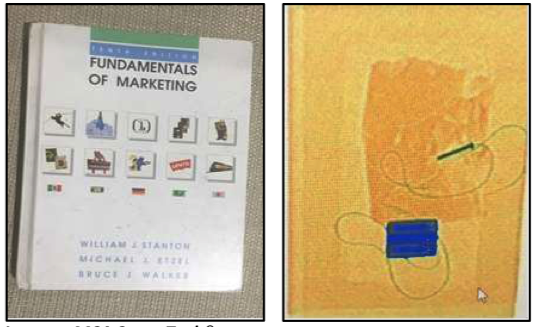Gulf media sources have reported that Kuwaiti security officers intercepted a package containing an improvised explosive device, or IED, at Kuwait’s airport on Friday, April 12.
According to Kuwaiti interior ministry officials, the device was detected during a routine cargo check, after which the package was seized by officers for further examination. A special forensics team who screened the package using thermal devices discovered a hollowed- out book inside that reportedly contained batteries, an explosive paste, and TNT.

Situational Awareness
If verified as a genuine device, this incident is the latest example of how terror groups, or individuals with malevolent intent, continue to evolve their tactics and methods in an effort to successfully place an explosive device onboard an aircraft. (NOTE: The example shown above is not indicative of a device capable of detonating and causing a commercial passenger or cargo plane to crash. It has been included strictly as a visual reference.)
Al-Qaeda in particular is known to be focused on successfully planting an explosive device on a commercial passenger or cargo plane and detonating it while in flight. Recent incidents include the February 2016 explosion on a Somali Daallo Airlines flight bound for Turkey with an explosive device carried on board into the main cabin inside a laptop; and an October 2010 incident in which IEDs were detected inside the ink cartridges of two boxed computer printers due to be loaded on U.S. bound cargo flights. In a similar tactical case, in March 2011 Jemaah Islamiyah, an Indonesian jihadist group linked to al-Qaeda, mailed three bombs concealed inside hollowed out books to an Islamic activist, a youth group leader, and a former member of Indonesia's counterterrorism police.
While no one was killed, one device reportedly injured five people while being defused by a police officer, and the other two were found by the authorities and safely dismantled. According to reports, the bomb makers hid the devices by hollowing out the pages of books and placing the devices inside. In addition, while cellphones and wires were also placed inside the packages, presumably as detonation mechanisms, their specific function was reportedly unclear to investigators.
Jemaah Islamiyah remains the key terrorist group in Southeast Asia today, maintaining a low profile 16 years after carrying out the Bali bombings that killed over 200 people.










